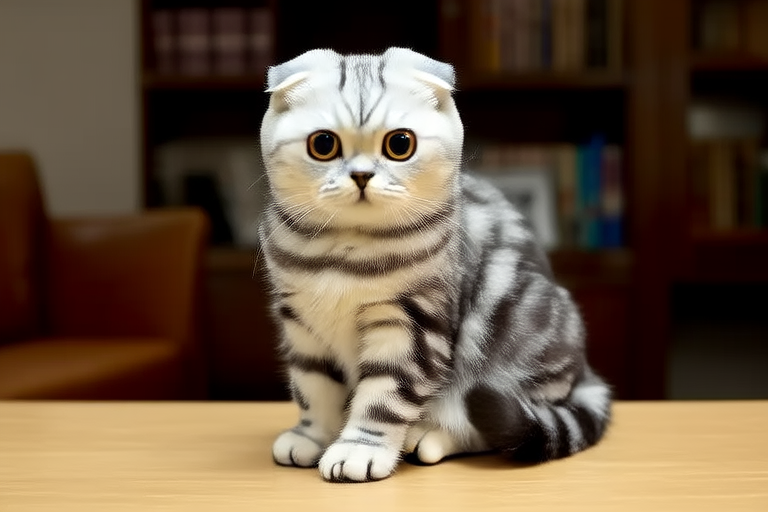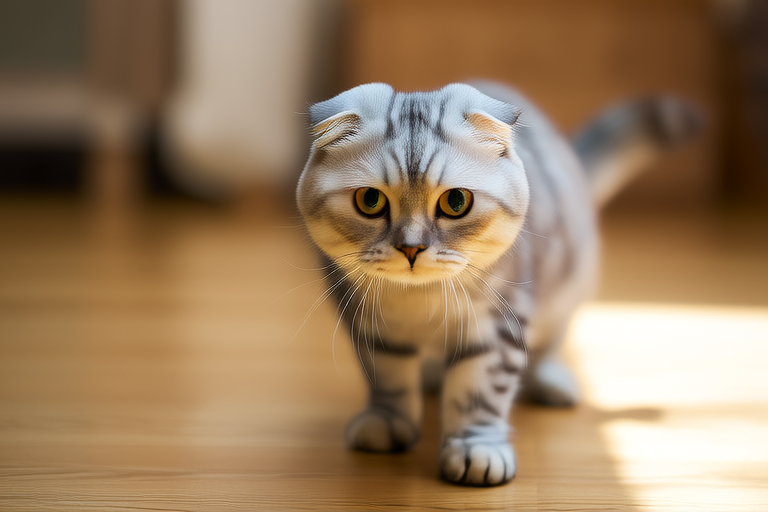The Unique Appeal of Scottish Folds: What Every Cat Lover Should Know
For centuries, cats have been cherished companions, offering unconditional love and companionship to millions around the world. Among the many breeds of felines, one stands out for its unique charm and distinctive appearance – the Scottish Fold. This breed has captured the hearts of cat lovers with its adorable folded ears and gentle demeanor. In this article, we will explore the distinctive features, temperament, grooming needs, health considerations, and common misconceptions surrounding these beloved pets.
DISTINCTIVE PHYSICAL CHARACTERISTICS
One of the most striking features of Scottish Folds is their distinctive ear shape. These cats have a natural mutation that causes the cartilage in their ears to fold forward and down, giving them a unique appearance. The folding can vary from a slight bend to a nearly vertical fold. Their round faces, wide-set eyes, and short, plush coats add to their endearing looks. Scottish Folds come in a variety of colors and patterns, making each one unique. Their medium-sized bodies are well-proportioned, and their legs are sturdy, contributing to their overall graceful appearance.
TEMPERAMENT AND INTERACTION WITH HUMANS AND OTHER PETS
Scottish Folds are known for their sweet, affectionate nature. They are often described as being dog-like in their loyalty and attachment to their human families. These cats are generally calm and easygoing, making them ideal companions for people seeking a relaxed pet. They enjoy being around their owners and are known to follow them from room to room, seeking attention and companionship. Scottish Folds are also playful and curious, often engaging in interactive play with toys or their owners. They are adaptable and can thrive in various living situations, from small apartments to spacious homes.
When it comes to interacting with other pets, Scottish Folds tend to be quite sociable. They usually get along well with other cats and dogs, especially if introduced at a young age. However, every animal is different, and individual personalities can influence how they interact with others. It’s important to introduce new pets gradually and under supervised conditions to ensure a harmonious relationship.
GROOMING NEEDS
Caring for a Scottish Fold’s coat is relatively simple due to their short, dense fur. Regular brushing helps to remove loose hair and prevent matting, while also stimulating the skin and promoting healthy coat growth. Grooming sessions provide an opportunity for bonding and can help your cat become accustomed to handling. Bathing is generally unnecessary unless absolutely required, as over-bathing can strip the coat of its natural oils. Scottish Folds may require more frequent nail trimming than some other breeds, so it’s advisable to start early and make the process a positive experience for your cat.
HEALTH CONSIDERATIONS
While Scottish Folds are generally healthy cats, they are prone to certain genetic conditions due to their unique ear structure. One of the most significant concerns is osteochondrodysplasia, a condition affecting the cartilage development that can lead to joint problems, particularly in the tail, legs, and spine. Early intervention and management can help mitigate the impact of these issues. Regular veterinary check-ups are essential to monitor your cat’s health and address any potential problems promptly.
In addition to monitoring their joint health, it’s important to maintain a balanced diet and exercise routine for your Scottish Fold. Obesity can exacerbate joint issues, so providing a nutritious diet and opportunities for physical activity are crucial. Interactive toys and playtime can help keep your cat active and engaged.
COMMON MISCONCEPTIONS
There are several myths and misconceptions surrounding Scottish Folds that are worth addressing. One common misconception is that all Scottish Folds develop severe joint problems. While it’s true that some cats may be affected, many live long, healthy lives without significant issues. Another misconception is that the folded ears make these cats deaf. This is not the case; the folding does not affect hearing. Additionally, some people believe that all Scottish Folds must have folded ears to be considered part of the breed. In reality, both folded and straight-eared cats can be registered as Scottish Folds, although only those with folded ears can compete in shows.
WHY SCOTTISH FOLDS ARE POPULAR AMONG CAT ENTHUSIASTS
The popularity of Scottish Folds stems from their unique appearance, friendly temperament, and adaptability. Their folded ears and round faces give them a distinctive look that sets them apart from other breeds. Their gentle nature makes them excellent companions for families, including those with children and other pets. Scottish Folds are intelligent and responsive, often forming strong bonds with their owners. Their playful yet calm demeanor ensures they fit well into various living environments, whether in bustling households or quieter settings.
Moreover, the breed’s popularity is bolstered by their growing presence in media and pop culture. From featuring in movies and television shows to inspiring merchandise and artwork, Scottish Folds have become recognizable symbols of feline charm and grace. Their increasing visibility has introduced more people to the breed, further fueling their appeal.
CONCLUSION
The Scottish Fold is a breed that combines unique physical traits with a delightful personality, making it a favorite among cat enthusiasts. With their folded ears, sweet disposition, and engaging nature, these cats offer a special kind of companionship that many find irresistible. By understanding their specific needs and taking steps to ensure their health and happiness, you can provide a loving home for a Scottish Fold and enjoy years of joyful companionship.

